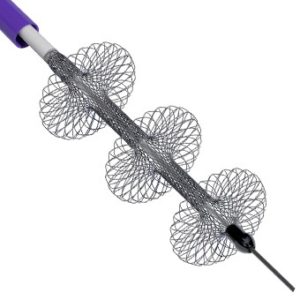 Six-month outcomes from FLASH registry have shown that patients with pulmonary embolism who were treated with mechanical thrombectomy showed significant improvement in symptoms, quality of life and cardiac functions.
Six-month outcomes from FLASH registry have shown that patients with pulmonary embolism who were treated with mechanical thrombectomy showed significant improvement in symptoms, quality of life and cardiac functions.
The findings were presented as late-breaking clinical research at the Society for Cardiovascular Angiography & Interventions (SCAI) 2023 scientific sessions (18–20 May, Phoenix, USA).
FLASH is a prospective, single-arm, multicentre registry of acute pulmonary embolism patients treated with the FlowTriever system (Inari Medical). Six-month clinical outcomes were assessed, including Modified Medical Research Council (Mmrc) dyspnoea score, right ventricular (RV) function, six-minute walk test (6MWT) distances, and PEmb Quality of Life (QoL) scores.
Initial data show the safety and effectiveness of long-bore thrombectomy, removal of blood clots using a mechanical catheter, for the treatment of pulmonary embolism rather than the current standard-of-care, anticoagulation along with the use of catheter-based interventions, but limited data exist on longer-term outcomes.
The trial enrolled 800 patients across 50 US sites, 54.1% were male and the mean age was 61.2 years. Thrombolytic contraindications were reported in 32.1% of patients, and 77.1% were classified as intermediate-high-risk and 8% as high-risk. Most patients (74.8%) completed all study visits through a six-month follow-up.
In 599 patients who completed a six-month follow-up, multiple statistically significant functional and clinical improvements were reported during the study period.
Findings show that the proportion of patients with normal echocardiographic RV function increased from 15.1% pre-thrombectomy to 95.1% and 94% had normal pulmonary artery pressures. Furthermore, all-cause mortality was 0.3% at the 48-hour visit, 0.8% at the 30-day visit, and 4.6% at study exit (median=199 days post-treatment).
Patient exercise tolerance and symptoms also improved significantly after treatment, with the distance a patient were able walk in six minutes increasing from 180 meters at 48 hours post treatment to 398 meters.
Median mMRC dyspnea score improved from 3 at baseline to 0 (p<0.0001), and the percentage of patients with normal RV function on echocardiography increased from 15.1% at baseline to 95.1% (p<0.0001), and RV systolic pressure ≤40mmHg improved from 28.4% at baseline to 93.9%.
Six-month prevalence of site-reported chronic thromboembolic pulmonary hypertension was 1% and chronic thromboembolic disease was 1.9%.
“It is encouraging to see the dramatic and rapid improvement in both clinical outcomes and daily activities of our patients, like taking a walk without running out of breath,” said Sameer Khandhar (University of Pennsylvania Penn Presbyterian Medical Center, Philadelphia, USA), a study co-author. “We are hopeful these FLASH data serve as a next step in understanding the importance of thrombectomy as a treatment option for patients that shows in their recovery and improvements in day-to-day quality of life.”
In addition to significant improvement in patient symptoms, cardiac function and quality of life, long-term low mortality was also reported following treatment with the FlowTriever System. These data suggest that rapid extraction of thrombus may prevent long-term impact in pulmonary embolism patients, though comparative data relative to conservative management are needed.







